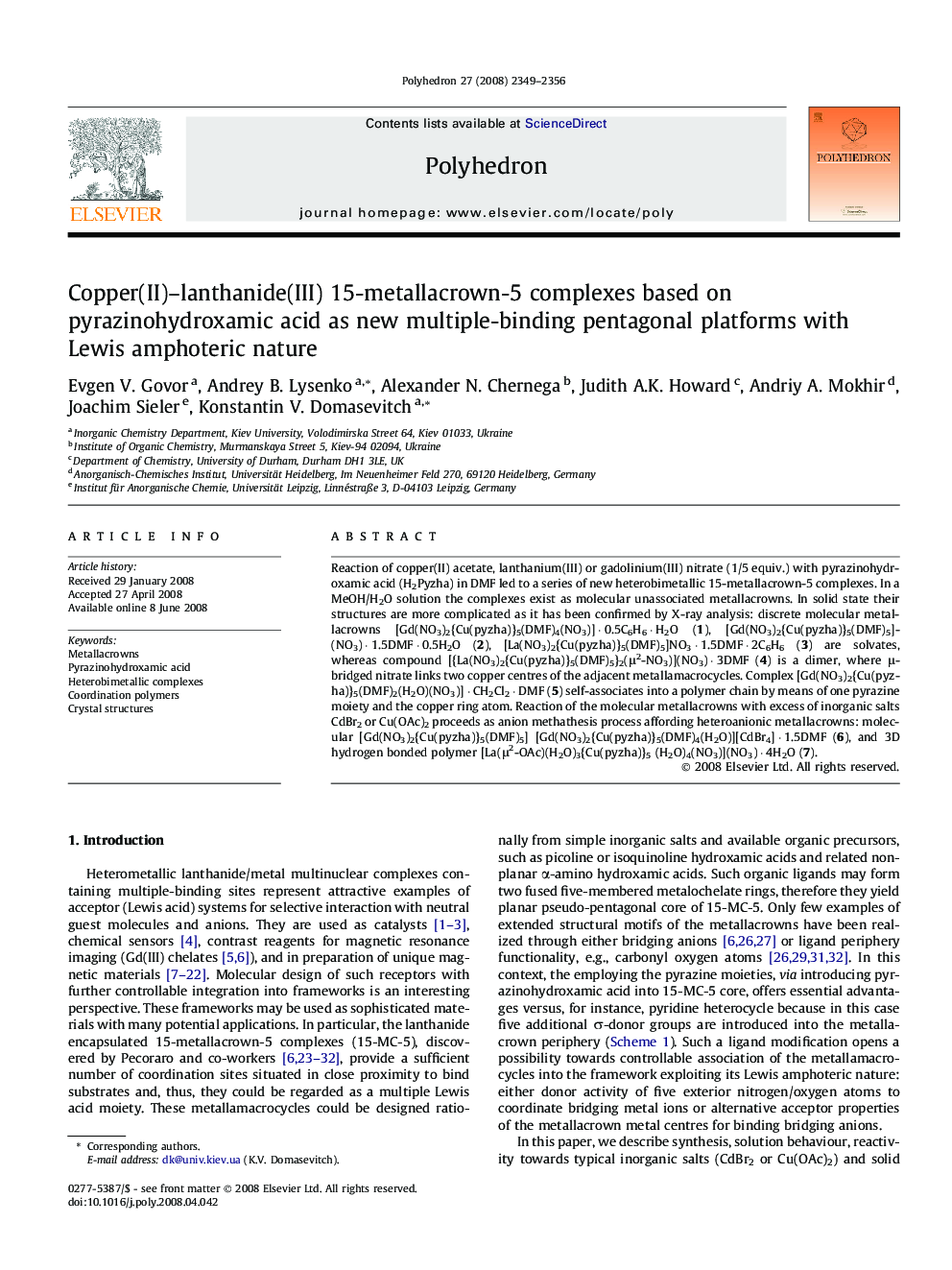| Article ID | Journal | Published Year | Pages | File Type |
|---|---|---|---|---|
| 1339443 | Polyhedron | 2008 | 8 Pages |
Reaction of copper(II) acetate, lanthanium(III) or gadolinium(III) nitrate (1/5 equiv.) with pyrazinohydroxamic acid (H2Pyzha) in DMF led to a series of new heterobimetallic 15-metallacrown-5 complexes. In a MeOH/H2O solution the complexes exist as molecular unassociated metallacrowns. In solid state their structures are more complicated as it has been confirmed by X-ray analysis: discrete molecular metallacrowns [Gd(NO3)2{Cu(pyzha)}5(DMF)4(NO3)] · 0.5C6H6 · H2O (1), [Gd(NO3)2{Cu(pyzha)}5(DMF)5](NO3) · 1.5DMF · 0.5H2O (2), [La(NO3)2{Cu(pyzha)}5(DMF)5]NO3 · 1.5DMF · 2C6H6 (3) are solvates, whereas compound [{La(NO3)2{Cu(pyzha)}5(DMF)5}2(μ2-NO3)](NO3) · 3DMF (4) is a dimer, where μ-bridged nitrate links two copper centres of the adjacent metallamacrocycles. Complex [Gd(NO3)2{Cu(pyzha)}5(DMF)2(H2O)(NO3)] · CH2Cl2 · DMF (5) self-associates into a polymer chain by means of one pyrazine moiety and the copper ring atom. Reaction of the molecular metallacrowns with excess of inorganic salts CdBr2 or Cu(OAc)2 proceeds as anion methathesis process affording heteroanionic metallacrowns: molecular [Gd(NO3)2{Cu(pyzha)}5(DMF)5] [Gd(NO3)2{Cu(pyzha)}5(DMF)4(H2O)][CdBr4] · 1.5DMF (6), and 3D hydrogen bonded polymer [La(μ2-OAc)(H2O)3{Cu(pyzha)}5 (H2O)4(NO3)](NO3) · 4H2O (7).
Graphical abstractIntroducing of pyrazine hydroxamate into copper(II)–lanthanide(III) 15-metallacrown-5 core enhances the Lewis amphoteric properties leading to numerous structural types: from molecular monomeric and dimeric to the self-assembled polymeric motifs.Figure optionsDownload full-size imageDownload as PowerPoint slide
